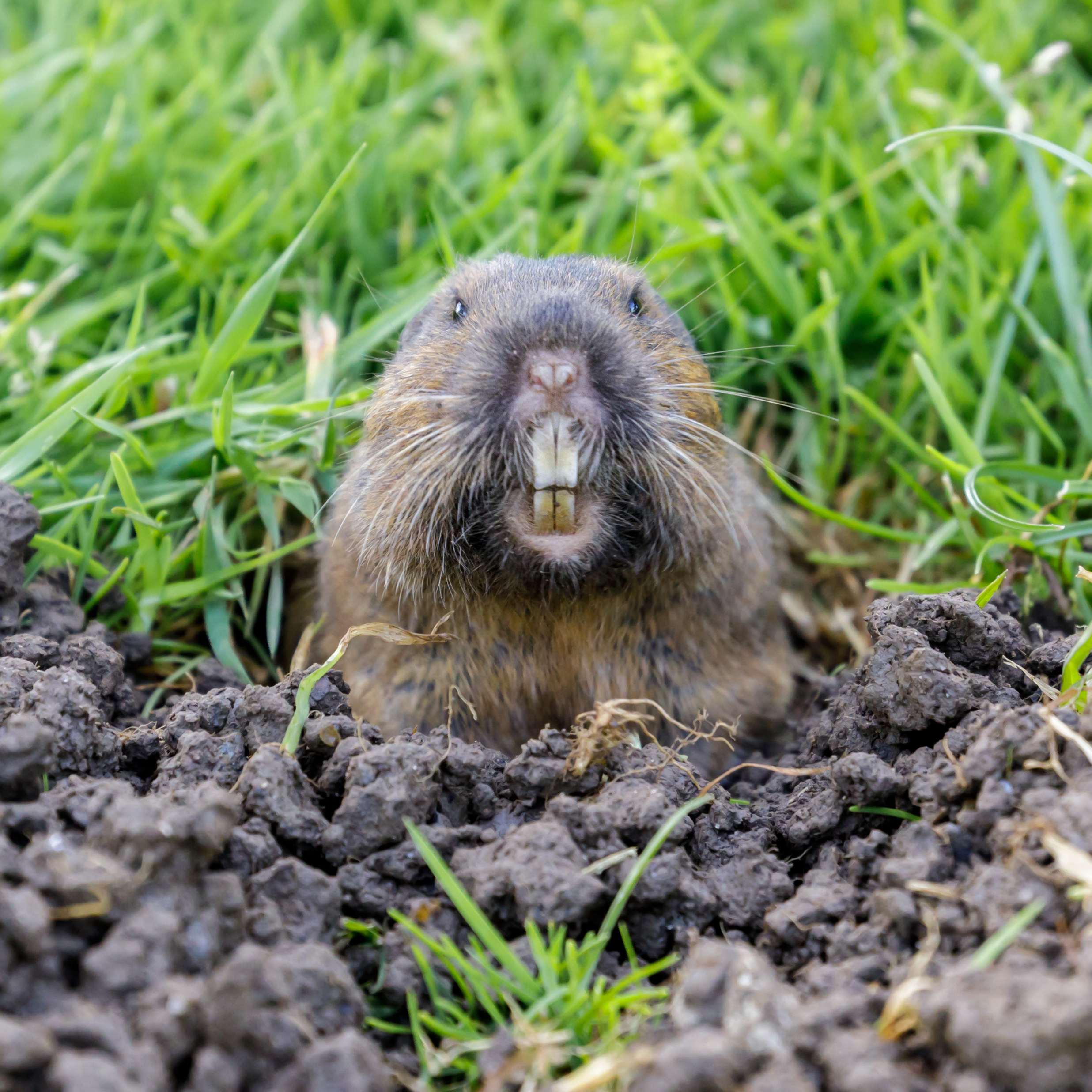
18 Jul Frequently Asked Questions About Pocket Gophers
If you’ve sunk a lot of time, money, and effort into creating a healthy yard, beautiful garden, or fertile farmland, you should know about a kind of underground invader that can undo all your hard work. Small mammals called pocket gophers can devour your plant life while creating ugly mounds of excavated dirt.
Fortunately, you can protect your property from this kind of destruction once you understand some important points about pocket gophers, from their appearance and diet to common techniques for eliminating pocket gopher infestations. Start by perusing the following frequently asked questions on the subject.
What Do Pocket Gophers Look Like?
The species of pocket gophers common to California generally range from five to fourteen inches in length. They get their name from their habit of storing and carrying food in their external cheek pockets. Other features that can help you identify them include their elongated front teeth, big claws, and small eyes and ears.
This combination of features makes the pocket gopher an excellent digger and burrower. These rodents spend most of their time underground, invisible to property owners. If you do see one from a distance, you may easily mistake it for a hamster, rat, vole, or other member of the rodent family.
What Problems Can Pocket Gophers Cause?
One sure sign that you have a pocket gopher problem instead of some other rodent infestation involves the appearance of large earthen mounds on your property. A single pocket gopher can dig multiple mounds in one day. Over time, pocket gophers can create an elaborate burrow network extending over 2000 square feet.
All this excavation can spell serious trouble for your crops, flowering plants, grass, or trees by eroding the soil and damaging irrigation systems. At the same time, the voracious appetites of pocket gophers compel them to eat practically any vegetable matter they encounter through their burrowing activities.
In addition to causing property damage, pocket gophers can pose certain threats to human health. These mammals can spread infectious diseases such as rabies, hantavirus, and leptospirosis. By eliminating these pests, you can protect your family as well as your flora.
How Do Pest Control Experts Handle Pocket Gophers?
Professional treatment for a pocket gopher infestation may involve a combination of poisons and traps. Pest control experts can also fumigate the property with carbon monoxide. Another means of elimination involves putting out bait laced with zinc phosphide or other toxic substances.
Stainless-steel box-squeeze or pincer traps may eliminate small-scale infestations without killing the pocket gophers. Because this technique requires precise locations of the burrows as well as placing and checking the traps, you’ll want to leave it to a pest control professional even if you think you can do it yourself.
How Can You Minimize Future Pocket Gopher Issues?
Pocket gophers usually dig their feeding burrows at a depth of up to 12 inches. You can make your crops or plants invulnerable to these feeding efforts by digging a trench around them to a greater depth than the typical feeding burrow and then planting a wire-mesh fence in the trench.
Natural repellent techniques may also prove useful for keeping pocket gophers away from your land. For instance, oleander, marigolds, rosemary, and lavender can all help to repel pocket gophers. However, at the first sign of a fresh infestation, you should schedule a professional pest control treatment.
If you believe that a population of pocket gophers threatens your yard, garden, or farm, reach out to the professionals at Eary Termite & Pest Services. Our experienced professionals know how to get rid of pocket gophers while also protecting your property from a wide range of other common pests. Contact us today.




Sorry, the comment form is closed at this time.